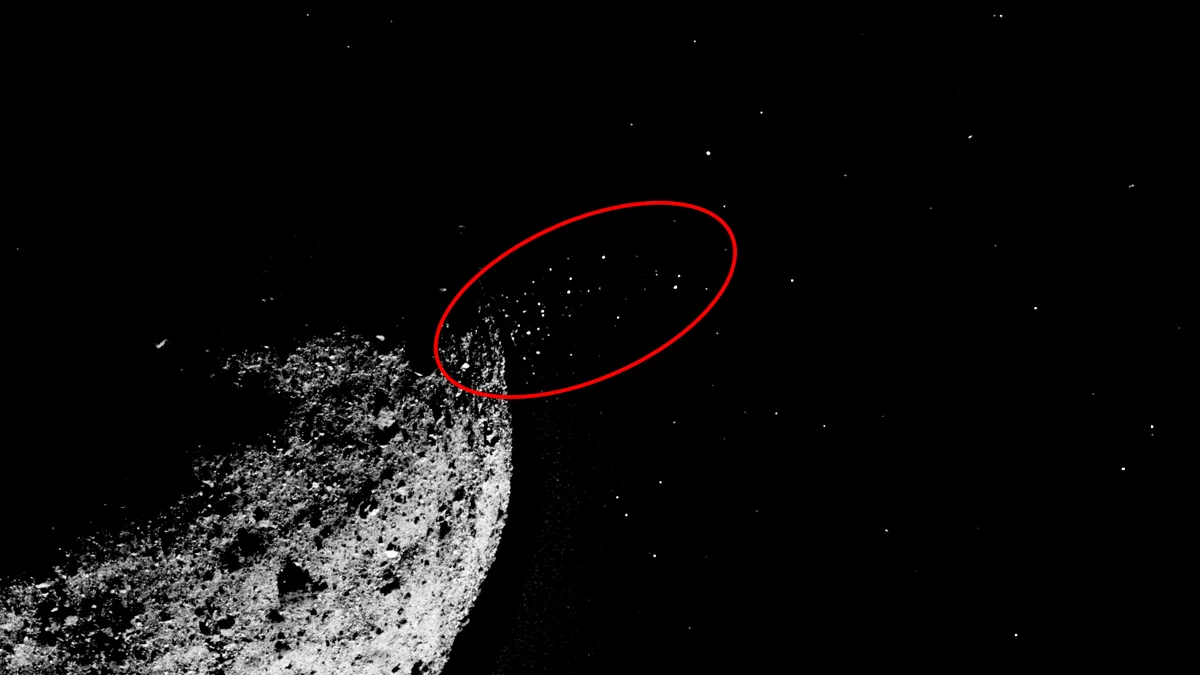
Bennu spews stuff into space, but scientists don't know why
NASA's OSIRIS-REx spacecraft is returning some surprising results from potentially-hazardous asteroid Bennu.
When your robotic spacecraft is achieving the closest orbit around an object, ever, millions of kilometres away in our solar system, knowing exactly where that spacecraft may encounter obstacles like dust and gravel surrounding that object is very important.
Now, imagine that your spacecraft suddenly sends back images that reveal the object you have it circling is actively spewing plumes of material - bits of gravel and dust, launching off the surface, travelling at speeds of up to a few metres per second, out into space!
This is the surprising result that NASA's OSIRIS-REx spacecraft has sent back from asteroid Bennu!
"The discovery of plumes is one of the biggest surprises of my scientific career," Dante Lauretta, OSIRIS-REx principal investigator at the University of Arizona, told NASA. "And the rugged terrain went against all of our predictions. Bennu is already surprising us, and our exciting journey there is just getting started."
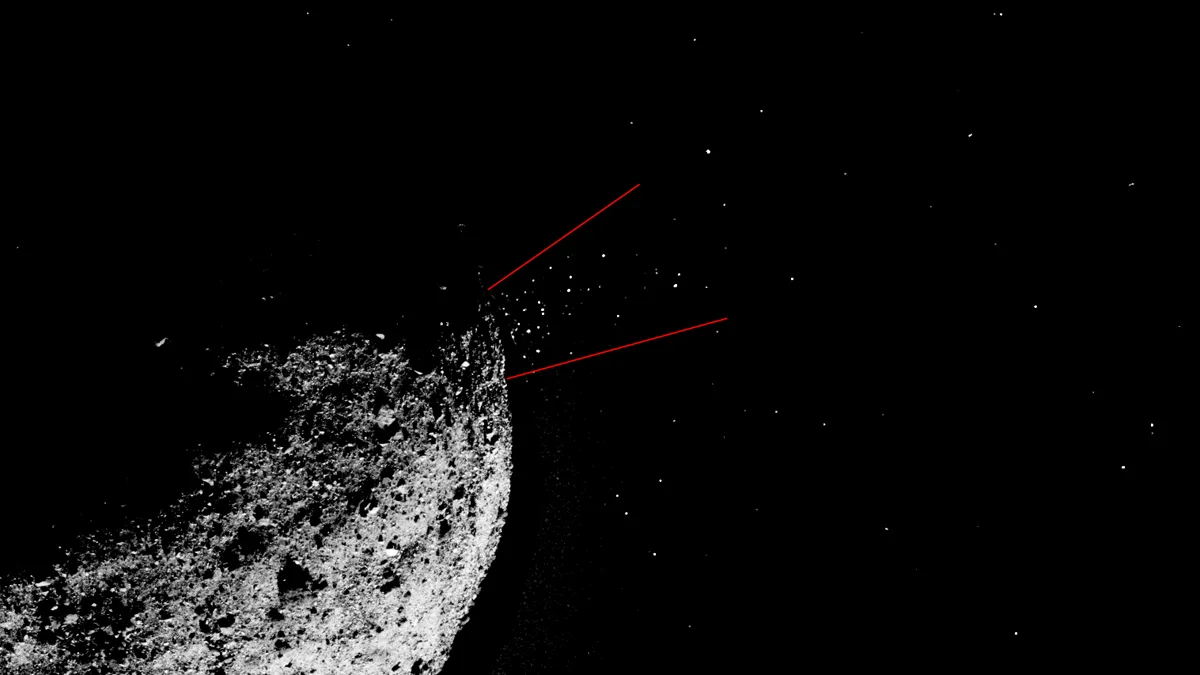
This is a composite image of two pictures snapped by OSIRIS-REx's Navcam-1 instrument, taken on January 19, 2019. The first, shorter exposure image, shows the details Bennu's surface, to the lower left. The second, taken over a longer 5-second exposure, takes over along the horizon of the asteroid, revealing a plume of materials of various sizes, being ejected from the surface, into space. The red lines have been added to frame the plume, to better highlight it. Credit: NASA/Goddard/University of Arizona/Lockheed Martin/Scott Sutherland
The nature of these plumes made them impossible to see when OSIRIS-REx first arrived at Bennu, given its distance from the asteroid at the time.
It was on January 6 that the first of these plumes was spotted, less than a week after the spacecraft achieved its New Years Eve close orbit around Bennu, and right in the middle of the science team's efforts to test OSIRIS-REx's instruments at its new location.
According to Lauretta, as soon as they spotted that first plume, the team immediately stepped up their observation times, so they could detect more of them.
In the two months since, they have tracked material being ejected at slow speeds of a few centimetres per second, which ultimately falls back down to the asteroid's surface (sometimes orbiting as satellites for some time). They have also seen material leaving at speeds of a few metres per second, which ultimately escapes Bennu's gravity, flying off into interplanetary space.
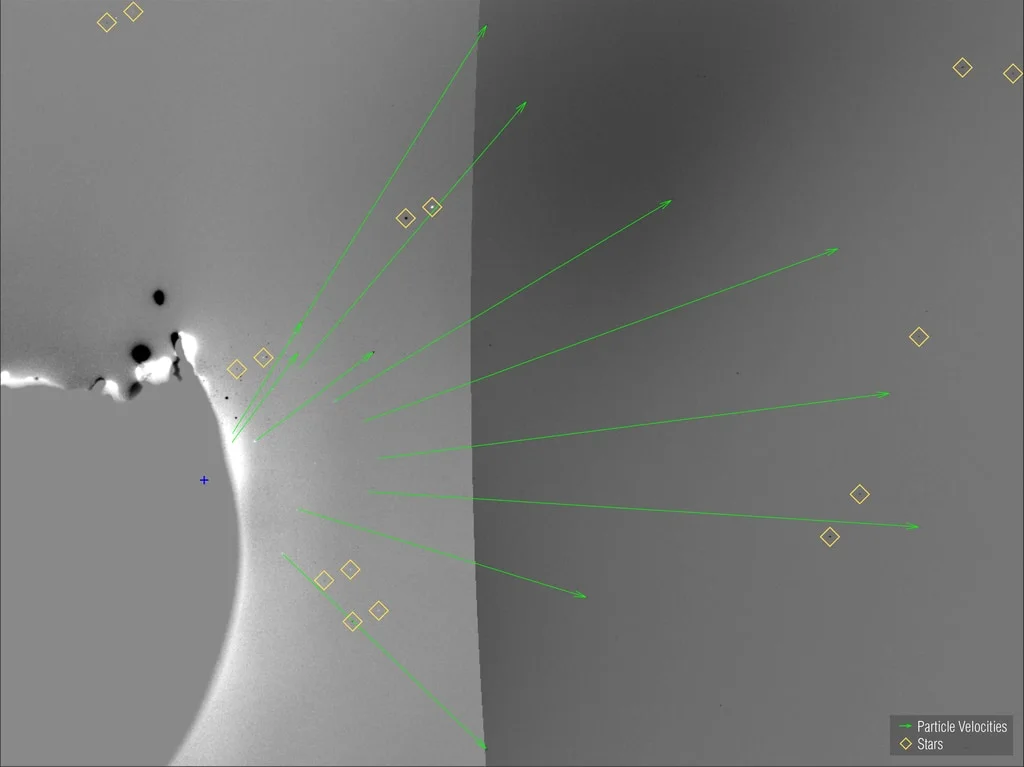
Yellow arrows overlaid on two long-exposure images of asteroid Bennu show the trajectories of particles that were ejected from Bennu’s surface on January 19. The underlying image is a composite of two images captured by the NavCam 1 imager onboard OSIRIS-REx. Credit: NASA/Goddard/University of Arizona/Lockheed Martin/KinetX, Inc.
The surprising thing about this discovery is that, at the moment, the mission scientists have no idea exactly how these plumes are produced or why they are happening.
There are several ideas floating around amongst the members of the team, according to Lauretta, however there are too many factors to consider to narrow it down, at this time.
BENNU METEORS?
Lauretta said that this material escaping into space raises an interesting possibility.
If these plumes happen regularly, with material being ejected out into space, there could be an annual meteor shower on Earth that originates from Bennu!
According to Lauretta, based on Bennu's orbit, this meteor shower - if it does exist - would take place in late September, every year, and would mostly be visible from the southern hemisphere.
This is because late September is when Earth comes closest to Bennu's orbit, and the asteroid's tilted path around the Sun has it travelling from below the ecliptic to above, at that point.

Earth passes close to Bennu's orbit on Sept 25, 2019. Credit: NASA CNEOS
There is no likely candidate shower that is a match, currently, among the known meteor showers. Any southern showers that peak during that time of the year have already been matched to other objects.
Setting up sensors in the southern hemisphere during that time, Lauretta said, may detect meteors from this asteroid. As the meteoroids burned up in the atmosphere, the spectrum of light they emitted could provide the science team with more information about the composition of the material coming off of Bennu. This would also give insights on the asteroid's overall composition, as well.
GRAVEL HAZARD
Another aspect of this discovery is the potential danger to the spacecraft, especially when it is on its closest orbits, and when it will be on approach to collect a sample from the asteroid's surface.
To help mitigate this potential hazard, the mission team is attempting to observe every instance of plumes that they can - a process that will become easier as the asteroid travels farther away from the Sun, allowing the spacecraft to better image the plumes from angles that will have them silhouetted against the bright sunlight.
This will help the team to determine if there is a 'seasonality' to the plumes (do they occur only at specific times of Bennu's orbit, such as near perihelion - its closest approach to the Sun), or if they are more consistent. That will allow them to narrow down the potential cause of the plumes, but by mapping them out, it will also provide something of a safety guide, highlighting regions of the asteroid the spacecraft should avoid as it closes in for sample collection.
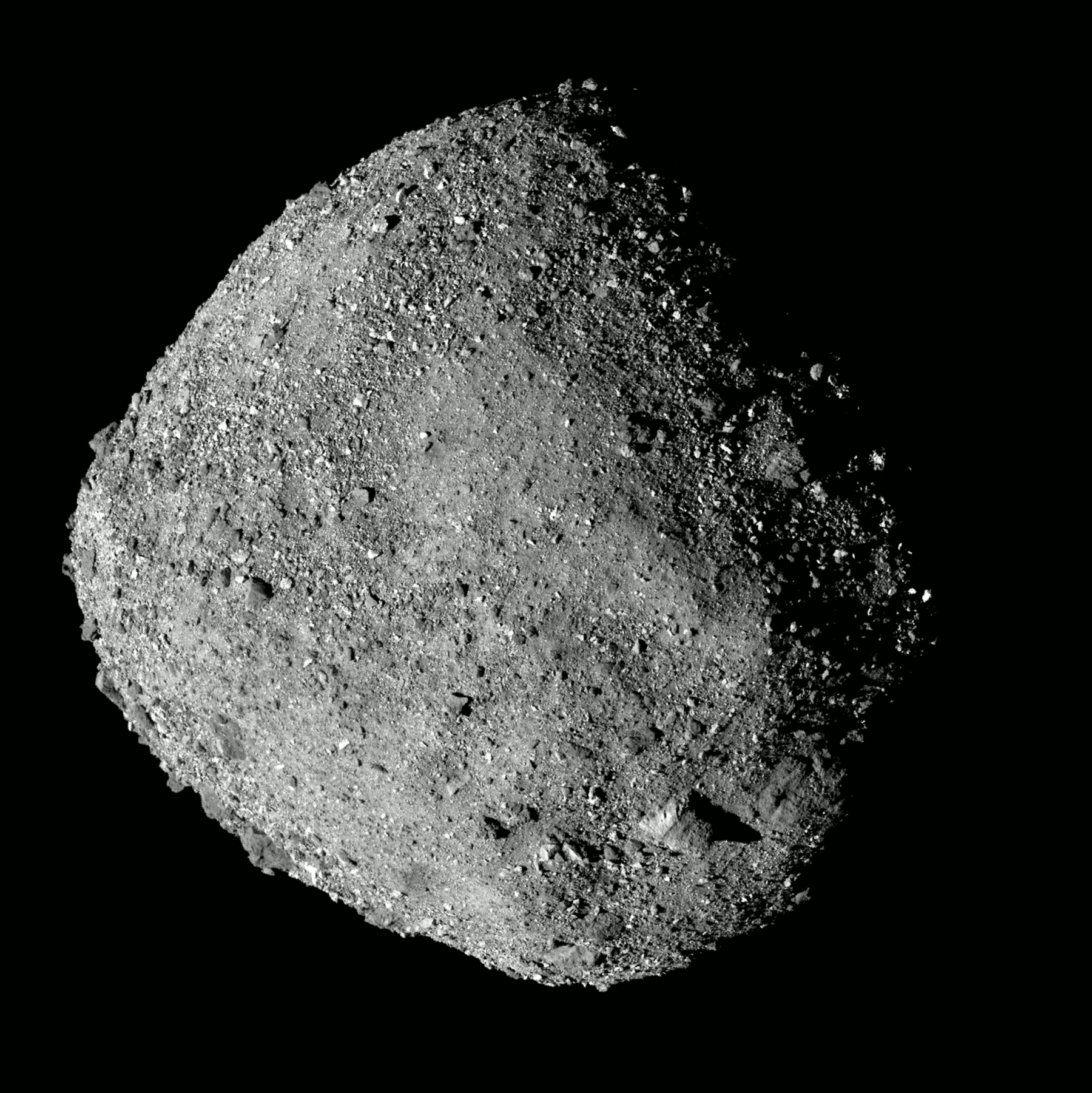
This 'whole disk' animation of asteroid Bennu reveals the surface features as it rotates beneath OSIRIS-REx. Credit: NASA/Goddard/University of Arizona
"The first three months of OSIRIS-REx's up-close investigation of Bennu have reminded us what discovery is all about — surprises, quick thinking, and flexibility," Lori Glaze, acting director of the Planetary Science Division at NASA Headquarters in Washington, said during the NASA teleconference. "We study asteroids like Bennu to learn about the origin of the solar system. OSIRIS-REx's sample will help us answer some of the biggest questions about where we come from."
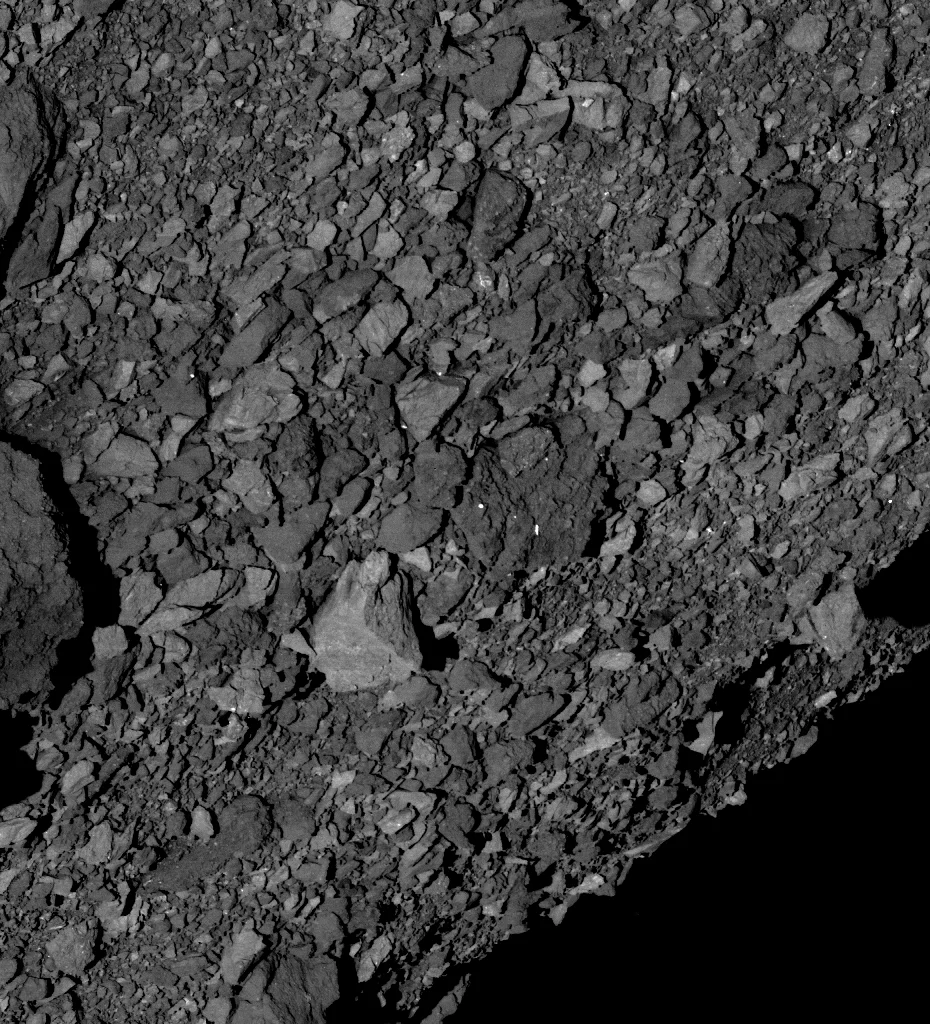
This image, taken on March 7, 2019 by the PolyCam camera on NASA’s OSIRIS-REx spacecraft from a distance of about 5 km, shows a view across asteroid Bennu’s southern hemisphere and into space. It demonstrates the number and distribution of boulders across Bennu’s surface. The large, light-colored boulder just below the center of the image is about 7.4 meters wide, which is roughly half the width of a basketball court. Credits: NASA/Goddard/University of Arizona
Asteroid 101955 Bennu was discovered in September 1999, and was originally named 1999 RQ36. Measuring about 525 metres across - or slightly smaller than the height of the CN Tower (at 553 m) - the asteroid is composed of about 60 to 80 million tonnes of rock and ice, loosely clumped together in what is called a 'rubble pile'.
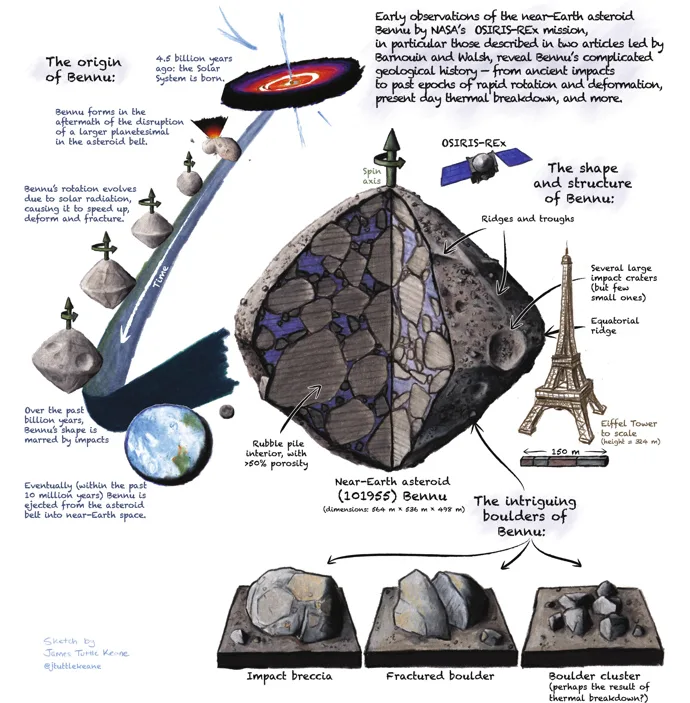
This sketch details Bennu's origin and size, and gives an idea of the most likely internal structure of the asteroid. Credit: James Tuttle Keane/Nature Geosciences
Essentially, if you could safely bring Bennu in to rest on Earth's surface, what looks like one massive object would suddenly tumble apart into a large pile of rocks.
Even so, Bennu does pose a risk to Earth, and is currently rated as the 2nd most potentially dangerous near-Earth asteroid.
At this time, there is no immediate threat from Bennu, but it does have a 1 in 2,700 chance of an impact, sometime in the 24-year period between 2175 and 2199. Part of OSIRIS-REx's mission at Bennu is to better assess the asteroid's impact potential, and to give scientists here a better idea of how we can defend Earth, should Bennu's threat potential become more of an immediate concern.
Sources: NASA | NASA Goddard | James Tuttle Keane











